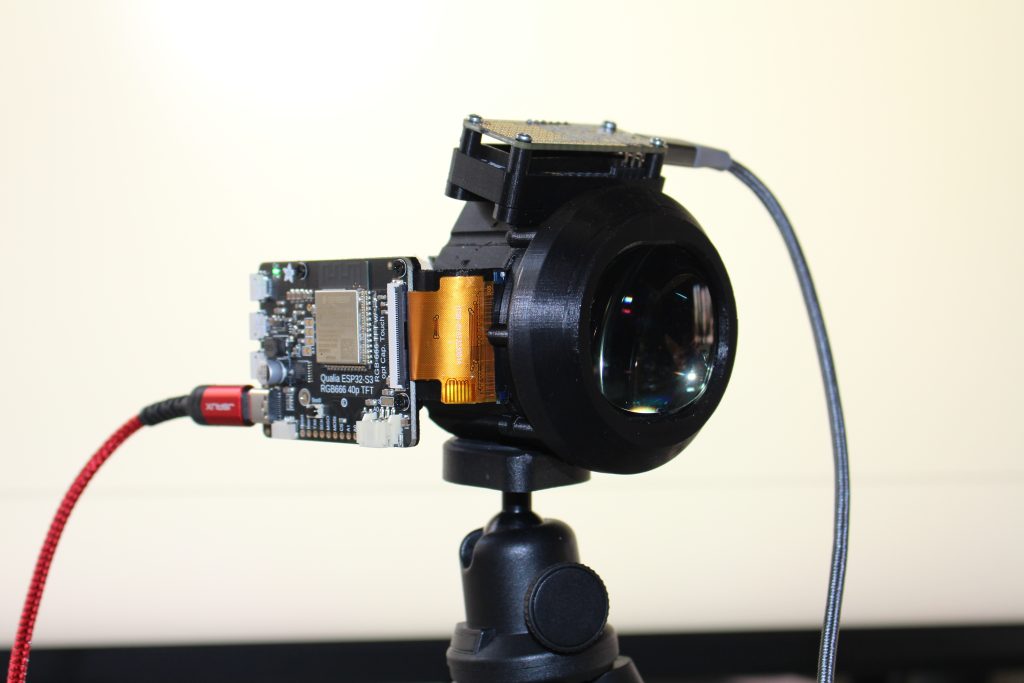

Standard LCD Backlighting
Zoomed image through a Meta Quest Pro lens
(click active image for larger format)
Special Note: Thank you to the hundreds of visitors to our I-Zone presentation at Display Week 2024! You made the show a great success for us. Lots of updates since the show including full 1200ppi performance as well as more compact lighting components and configurations. Updates to this page planned for end of next week.
Thanks to the Unreal Engine VR mod launched December 31, 2023, 1.75 Billion PC gamers world-wide can now play over 7 thousand of their favorite PC games with full 3D immersion using a VR headset. However, the low clarity, contrast (including ghosting and glare) and color saturation of current headsets (including the Apple Vision Pro) compared to desktop gaming monitors severely limits this interest.
 Panamorph’s multi-patented Exit Pupil Modulation (EPM) technology forms the core of a new, low-cost wearable 3D headset for immersive high performance PC gaming and other applications. Replacing the typical LCD backlight, EPM allows users to electronically adjust the size of the display exit pupil by turning on or off the projected light from an array of individually controllable LED light sources, each of which fills the entire LCD panel, so that an image of that LED array represents the system exit pupil. Turning off those LEDs that produce light in the exit pupil not reaching the user’s eyes results in an over 90% decrease in power consumption while dramatically increasing contrast, clarity and depth of field of the virtual image. In summary, EPM means …
Panamorph’s multi-patented Exit Pupil Modulation (EPM) technology forms the core of a new, low-cost wearable 3D headset for immersive high performance PC gaming and other applications. Replacing the typical LCD backlight, EPM allows users to electronically adjust the size of the display exit pupil by turning on or off the projected light from an array of individually controllable LED light sources, each of which fills the entire LCD panel, so that an image of that LED array represents the system exit pupil. Turning off those LEDs that produce light in the exit pupil not reaching the user’s eyes results in an over 90% decrease in power consumption while dramatically increasing contrast, clarity and depth of field of the virtual image. In summary, EPM means …
- Higher image contrast and clarity and deeper blacks than OLED or μLED through a pancake lens, even if their native contrast is higher than LCD.
- All the advantages and lower cost of LCD technologies with no local dimming needed.
- Simple, lightweight optical and electronic components.
- Much lower power usage eliminates the power and space requirements for fan cooling while supporting much longer life from smaller and lighter batteries for a more ergonomic form factor.
- Greater depth of field reduces Vergence-Accommodation Conflict.
 SPECIAL UPDATE: Previous EPM configurations, sometimes called Directed LCD Backlighting, leveraged eye tracking to turn on that LED and therefore that portion of the display exit pupil corresponding to the user’s eye pupil location at any given moment. However, recent testing has shown that over 90% of the benefits of EPM can be experienced by simply shrinking down the optical system exit pupil (by turning off peripheral light sources) as small as possible while still allowing sight of the entire virtual image. Depending on user preferences the size of the exit pupil can therefore be varied as a user electronic setting for an optimal blend of ergonomic viewing and imaging performance.
SPECIAL UPDATE: Previous EPM configurations, sometimes called Directed LCD Backlighting, leveraged eye tracking to turn on that LED and therefore that portion of the display exit pupil corresponding to the user’s eye pupil location at any given moment. However, recent testing has shown that over 90% of the benefits of EPM can be experienced by simply shrinking down the optical system exit pupil (by turning off peripheral light sources) as small as possible while still allowing sight of the entire virtual image. Depending on user preferences the size of the exit pupil can therefore be varied as a user electronic setting for an optimal blend of ergonomic viewing and imaging performance.
Development of core technologies in support of wearable displays has been in the DNA of Panamorph and its affiliate pursuits since the early 1990s. We are now expanding our developments in collaboration with integration partners to accelerate adoption of directed backlighting into new VR display products. For more information email us here.

Current EPM demonstration and experimentation setup using off-the-shelf components with a Meta Quest Pro pancake lens.
The content presented herein is provided for information purposes only. All rights reserved.
See the recent article from Insight Media: “Exit Pupil Modulation for High Performance VR Headsets Explained“.
